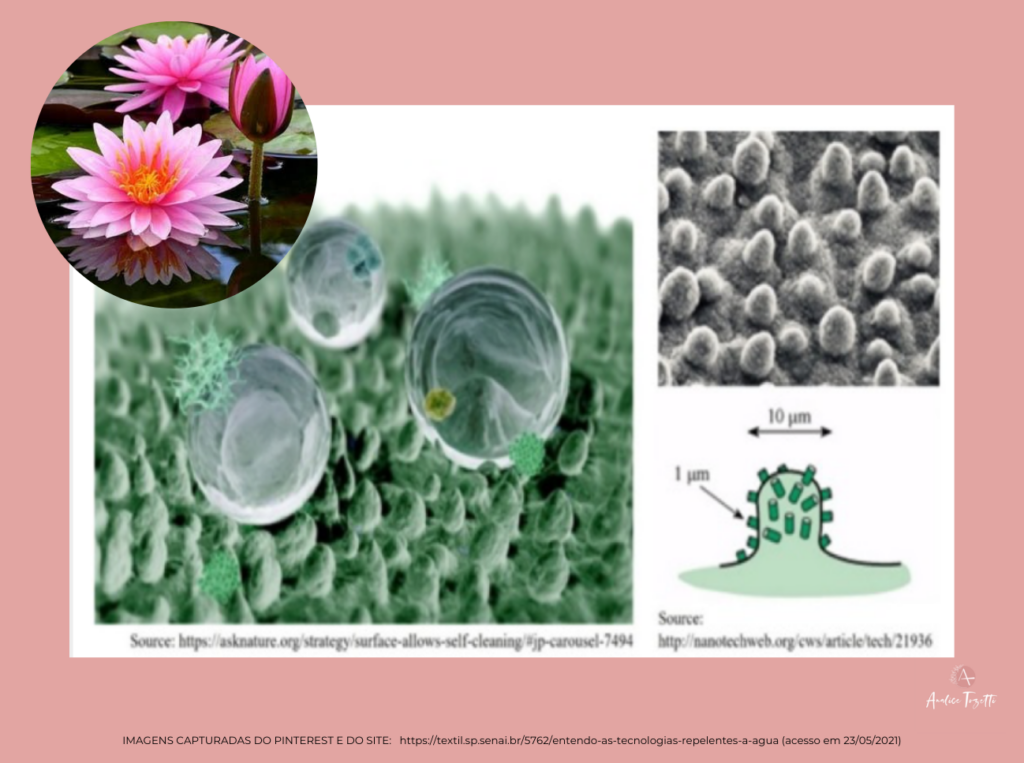
Nanotechnology on smart fabric conception.
How do Science and nature influence fashion?
In the last post we talked a little bit about the conception of a fabric and then, we came up with the idea that some of them may have some special features and it depends on their functionality. And, since I need to keep my word, we are talking a bit about smart fabric today. After all, if we perform multiple tasks, we need outfits that go with our rhythm. Do you agree with that?
In this context, nanotechnology is broadly used as a tool to produce smart fabric. But, wait a minute… What is nanotechnology applied to textile industry?
Nanotechnology caused an extremely important innovation impact upon textile industry, due to its capacity of conceiving fabric through manipulation of its atoms, setting up structures with multiple functionalities.
When comparing natural to synthetic fibers, the application of nanotechnology to the design of fabrics promoted the improvement of characteristics such as durability and resistance, in addition to more efficient heat exchanges, faster drying, different visual aspects, UV protection, antimicrobial protection, at the same time in which softness and smoothness to the touch were also achieved.
Now, bearing all of that in mind, shall we learn a bit about smart fabrics? So, let’s go!
Smart fabrics might be classified as passive, active and very active.
Passive fabrics are the ones that keep their features regardless of external stimuli from the environment.
In this group we can mention the insulating fabrics that withstand high temperatures, without varying properties such as resistance, mainly to heat, durability and stability. Examples: silica fabric, carbon fabric, ceramic fiber and aramid fabric.

Active tissues are those that react specifically according to the stimulation of an external agent. In this case, we can think of a breathable fabric that allows sweat to pass through, but at the same time prevents raindrops from being permeated into the fabric.

Do you remember Lotus flower? Or have you ever heard of Lotus effect? Certainly you’ve already heard of self-cleaning fabrics. It’s like... for several times Science seeks inspiration in nature.
Lotus leaves have a very interesting feature, super-hydrophobicity, which is their ability to repel water droplets, causing them to roll on their surface. But, how does it happen?
The lotus leaf has a slim structure that results from the coexistence of papillae with average sizes ranging from 10-20 µm in height and 10-15 µm in width, in addition to a waxy covering (do you remember the wax texture? That’s it, a bit oily texture). Those characteristics minimize the physical adhesion of the drop to the leaf surface.

Did you like this insight? The golden tip is to start observing nature more often. It may surprise you and inspire you to do unimaginable things. From now on, let us go back to smart fabrics classification.
The very active fabrics are the ones that adapt automatically its functionality as a response to some stimulus from the environment.
In this group we can mention the antimicrobial tissues, for example. A well-known antimicrobial agent is the silver nanoparticle. It prevents the proliferation of microorganisms in the tissues, since they act in the deactivation of these microorganisms (viruses, bacteria). They are efficient, even after a hundred washes. In Brazil, there are a lot of companies selling this type of clothing.
Some nice extra effects end up being observed with fabrics containing silver nanoparticles, preventing unpleasant odors and the fading of the pieces. That occurs because microorganisms do not find favorable conditions for their proliferation, even in environments with high humidity and heat.

I hope this post will help you somehow. Don’t forget to comment below with questions and suggestions. So, we can learn with each other even more. XOXO Su and Ana.
References
Britto, L. R. G., Kitazawa, H. M., Pepece, O. M. C. . The use of nanotechnology in the textile industry to innovate in pregnant fashion. Revista Brasileira de Gestão e Inovação. Brazilian Journal of Management & Innovation, v.6, n.2, 2019.
http://www.fibertex.com.br/produto/tecido-de-silica-para-isolamento-termico/accessed on May 3rd, 2021.
http://www.reisilisolamentos.com.br/tecido-para-isolamento-termicoaccessed on May 3rd, 2021.
https://textil.sp.senai.br/5762/entendo-as-tecnologias-repelentes-a-aguaaccessed on May 3rd, 2021.
https://www.cleanipedia.com/br/lavanderia/saiba-separar-as-roupas-antes-de-lavaras-diferencas-entre-tecidos-naturais-e-sinteticos.htmlaccessed on January 13th, 2021.
Sánchez, J. C. Smart textiles.Nanotechnology. Textile chemistry n° 82, 2006.

